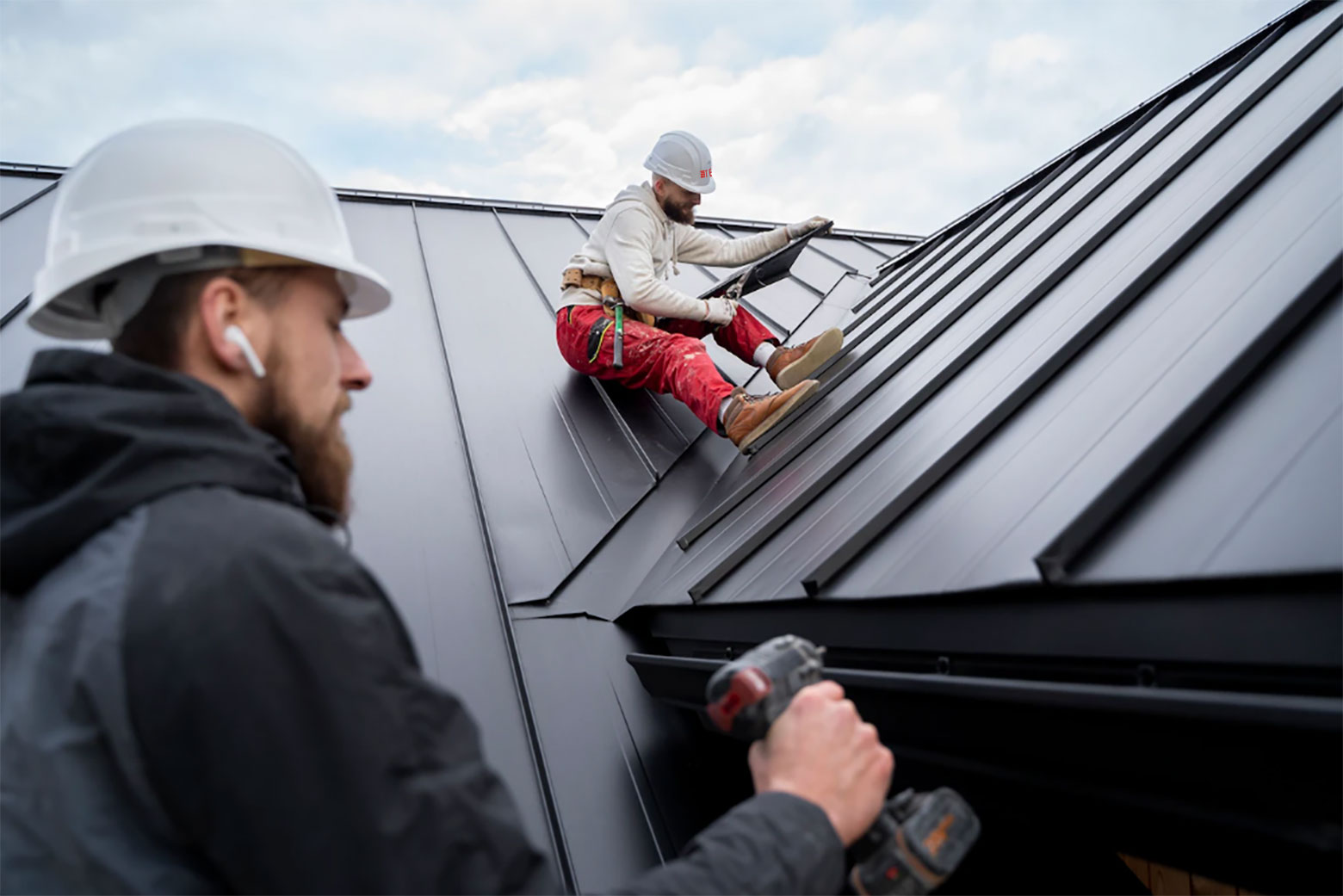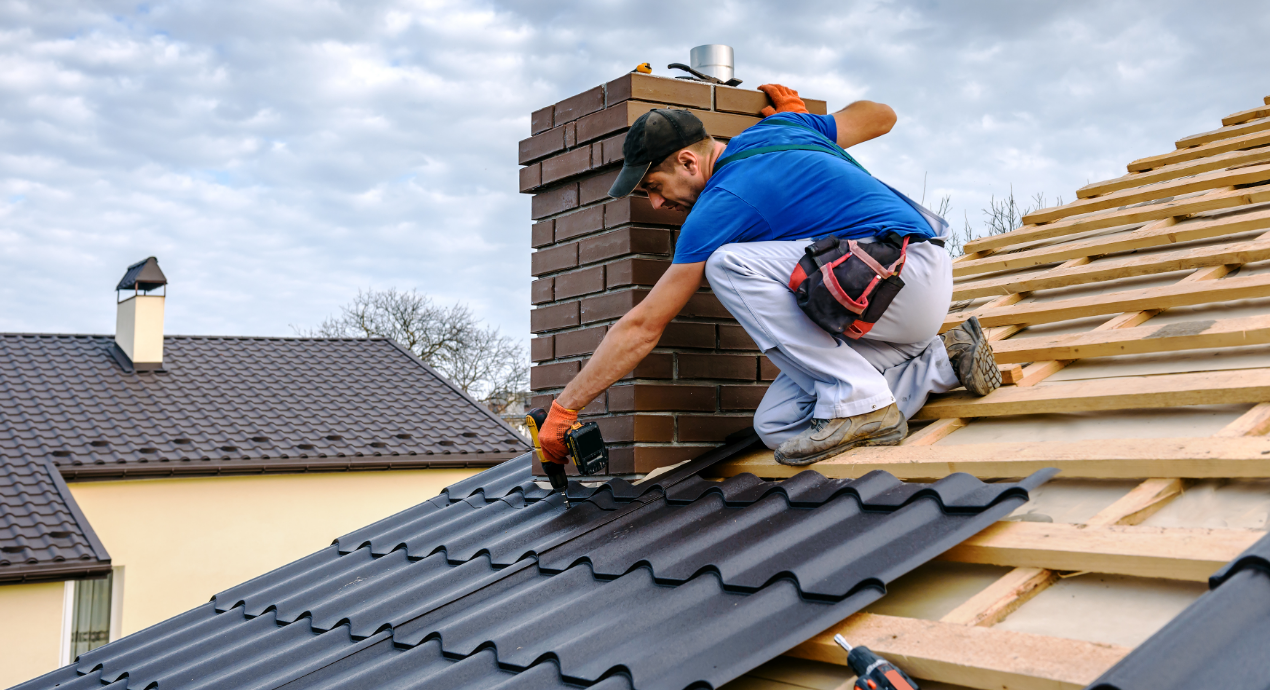Recognizing the Various Kinds of Roof Coverings: A Comprehensive Overview for Homeowners
With a selection of choices-- varying from the standard gable to the modern level-- each type presents special advantages and obstacles that should line up with the homeowner's ecological factors to consider and specific demands. As we check out the intricacies of different roofing kinds, it ends up being obvious that one dimension does not fit all; the ideal selection might shock you.
Saddleback Roof
Saddleback roofs, defined by their triangular form, are amongst the most preferred roof covering styles because of their simpleness and efficiency in shedding water and snow. This design includes 2 sloping sides that satisfy at a ridge, permitting effective water drainage and lessening the danger of water buildup. The steep pitch frequently related to saddleback roofs enhances their ability to take care of hefty rainfall, making them suitable for various climates.
Along with their useful benefits, gable roofs supply aesthetic versatility. They can be adapted to different architectural designs, from conventional to modern homes. The design can also accommodate additional attributes such as dormer home windows, which boost all-natural light and air flow in the attic room area.
Moreover, saddleback roofs offer sufficient space for insulation, adding to energy effectiveness. Home owners can pick from a range of roof covering materials, including asphalt shingles, steel, and tiles, even more improving modification choices.
In spite of their advantages, gable roof coverings may need extra support in areas susceptible to high winds or hefty snowfall. In general, the gable roof covering stays a popular choice because of its mix of performance, toughness, and aesthetic allure.
Flat Roofs
Level roof coverings are usually identified for their minimalist style and functional applications, particularly in commercial and commercial settings (oahu roofing). These roofs feature a straight or virtually horizontal surface, which permits simple building and functional room application. While they may do not have the aesthetic appeal of pitched roofs, level roofing systems offer various advantages, specifically in urban settings where maximizing area is critical
One of the key advantages of flat roof coverings is their access. Property owners can make use of the roof area for numerous objectives, such as roof gardens, terraces, or photovoltaic panel installments. Additionally, level roof coverings are generally extra economical to mount and preserve compared to their sloped counterparts, as they require less materials and labor.
Common products used for level roofing systems include built-up roof (BUR), customized bitumen, and single-ply membranes, each offering unique benefits. In general, level roof coverings offer as a adaptable and practical selection for several property owners and organizations alike.
Hip Roofs
Hip roofings are identified by their sloped sides that assemble at the top, developing a ridge. This style stands out from gable roof coverings, as all 4 sides of a hip roofing incline downwards towards the walls, offering a much more secure structure. The angle of the slopes can vary, enabling flexibility in building appearances and functionality.
One of the primary advantages of hip roofs is their capacity to stand up to hefty winds and damaging weather. The sloped surfaces make it possible for much better water image source drainage, lowering the danger of leaks and water damage. In addition, hip roofs supply raised attic room space, which can be made use of for storage or perhaps exchanged livable locations.
However, constructing a hip roofing system can be extra costly and complicated than simpler roofing types, such as gable roofs. The extra product and labor involved in producing the inclines and making certain appropriate architectural honesty can cause higher expenses. In spite of these downsides, several home owners prefer hip roofs for their longevity, aesthetic appeal, and capacity for energy performance.
Mansard Roofs
Mansard roofing systems, typically recognized by their distinct four-sided layout, feature two slopes on each side, with the reduced incline being steeper than the top. This architectural design, stemming from France in the 17th century, is not only aesthetically enticing but functional, as it makes the most find this of the useful room in the upper floorings of a building. The steep lower slope permits for more clearance, making it an excellent selection for attics or loft spaces, which can be transformed into living areas.
Mansard roofing systems are identified by their versatility, accommodating various building styles, from traditional to contemporary. They can be constructed with different materials, including asphalt roof shingles, slate, or metal, offering house owners with a series of alternatives to match their budget plans and choices. In addition, the layout permits the combination of dormer windows, improving natural light and ventilation in the upper degrees.
Nonetheless, it is necessary to think about the prospective disadvantages. Mansard roofings might need more upkeep because of the complexity of their style, and their steep inclines can be challenging for snow and rainfall drainage. Generally, mansard roofs combine style with practicality, making them a popular option among home owners looking for distinctive building attributes.
Shed Roofs
As property owners significantly look for simpleness and performance in their architectural layouts, dropped roof coverings have arised as a prominent option. Defined by a solitary sloping airplane, a shed roof covering presents a minimal aesthetic that matches different home styles, from modern to rustic.
Among the primary advantages of a shed roofing system is its uncomplicated building and construction, which frequently converts to lower labor and material costs. This layout permits reliable water drainage, decreasing the threat of leaks and water damage. Additionally, the vertical slope provides sufficient area for skylights, boosting natural light within the interior.
Lost roofing systems likewise supply convenience in terms of usage. They can be effectively integrated into enhancements, garages, or exterior frameworks like structures and sheds. In addition, this roofing system style can accommodate different roofing materials, consisting of steel, asphalt tiles, or also environment-friendly roofs, lining up with environment-friendly efforts.
Nonetheless, it is important to take into consideration local climate conditions, as hefty snow lots may require check over here adjustments to the roofing system's angle or framework. Overall, dropped roofings provide a useful and cosmetically pleasing alternative for homeowners seeking to take full advantage of performance without compromising design.
Final Thought


Gable roofs, defined by their triangular form, are amongst the most popular roof designs due to their simplicity and effectiveness in dropping water and snow. oahu roofing. The high pitch commonly connected with gable roof coverings boosts their ability to deal with hefty rainfall, making them suitable for various climates
While they might lack the visual allure of pitched roofs, flat roofing systems use many benefits, especially in urban atmospheres where taking full advantage of area is critical.

 Brian Bonsall Then & Now!
Brian Bonsall Then & Now! Michael C. Maronna Then & Now!
Michael C. Maronna Then & Now! Barbi Benton Then & Now!
Barbi Benton Then & Now! Kane Then & Now!
Kane Then & Now! Lisa Whelchel Then & Now!
Lisa Whelchel Then & Now!